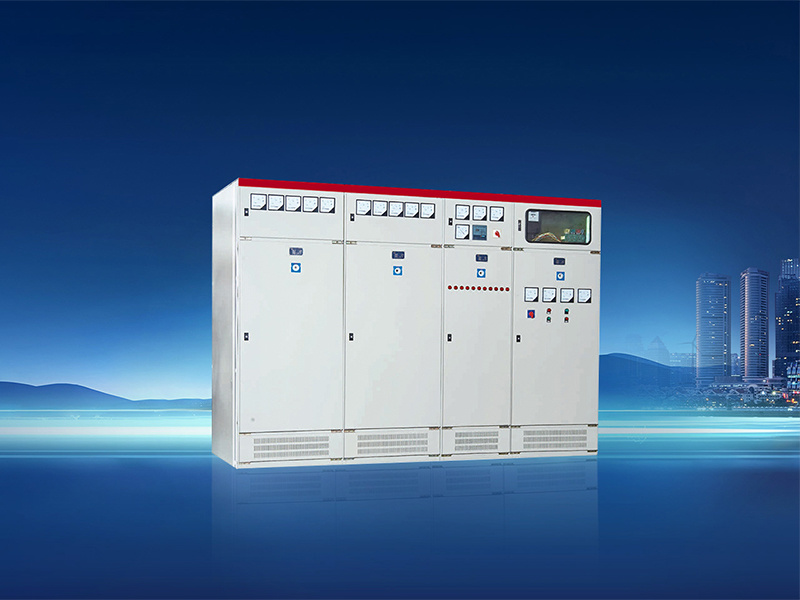Understand the basics of electrical testing and debugging in one article!
Understand the basics of electrical testing and commissioning in one article!
1. The role of electrical testing: The power system includes numerous electrical devices, and some power equipment failures can even threaten the safe power supply of the entire system. Practical experience in power production has proven that conducting testing and inspection work on electrical equipment as required is one of the important measures to prevent problems before they occur and ensure the safe and economical operation of the power system. This is where the term "preventive testing" comes from. Tests conducted on newly installed and overhauled power equipment are called handover acceptance tests. The purpose is to verify the quality of the electrical equipment itself and its installation and overhaul. The purposes of handover acceptance tests and preventive tests are consistent.
2. Classification by testing purpose
(1) Handover tests: Electrical equipment is usually installed by specialized electrical installation units. After installation, the installation unit must conduct tests on the electrical equipment before officially handing it over to the user unit. This test is called the handover test of electrical equipment.
(2) Preventive tests: Preventive tests are conducted on electrical equipment that has already been put into operation. They are primarily preventive in nature; regardless of the operating condition of the electrical equipment, regular tests must be conducted after a certain operating time, usually in conjunction with major or minor overhauls of the electrical equipment. Preventive testing of electrical equipment is an important measure to determine whether the equipment can continue to operate, prevent equipment damage, and ensure safe operation.
3. Classification by testing content
(1) Characteristic parameter tests: Characteristic parameter tests usually refer to testing certain electrical and mechanical characteristics of electrical equipment, such as the polarity of coils, the connection group designation of transformers, the opening and closing times of circuit breakers, and the minimum operating voltage of closing contactors and electromagnetic coils; measuring various losses of generators, recording no-load and short-circuit characteristics, etc.
(2) Insulation tests: Insulation tests refer to the examination and identification of the insulation condition of electrical equipment. Statistics show that insulation accidents dominate various accidents in power systems. To ensure the safe operation and service life of electrical equipment, insulation tests must be conducted.
4. Overall requirements for electrical testing
(1) The provisions of the "Regulations for Preventive Testing of Electrical Equipment" and the "Regulations for Handover Testing" are the basic requirements for inspecting equipment and must be strictly implemented. In maintenance, repair, and handover work, relevant personnel should also follow the relevant regulations issued by the ministry for maintenance and operation, continuously improve quality, adhere to a preventive approach, and actively improve equipment to ensure long-term, safe, and economical operation.
(2) Maintain a scientific attitude, and comprehensively and historically analyze test results to grasp the laws and trends of equipment performance changes. Strengthen technical management, improve documentation, promote technological innovation, and continuously enhance testing technology levels.
(3) Electrical equipment with a rated voltage below 110kV should undergo AC withstand voltage tests according to the "Regulations for Preventive Testing of Electrical Equipment" and the "Regulations for Handover Testing" (unless otherwise specified). For power transformers and current transformers, withstand voltage tests should be conducted after partial and complete winding replacements.
(4) When conducting insulation tests, various connected devices should be separated for individual testing as much as possible (except for complete sets of equipment). Equipment of the same testing standard can be tested together. To facilitate on-site testing, several electrical devices of the same testing standard that already have separate test records can also be tested together when individual testing is difficult; in this case, the testing standard should adopt the lowest standard among the connected devices.
(5) When the rated voltage of electrical equipment differs from the actual working voltage used, the standard for test voltage should be determined based on the following principles: ① When using electrical equipment with a higher rated voltage to enhance insulation, tests should be conducted according to the rated voltage standard of the equipment; ② When using electrical equipment with a higher rated voltage, if the requirements for product universality are met, tests should be conducted according to the actual working voltage standard of the equipment; ③ When using electrical equipment of a higher voltage level, if the requirements for high-altitude or polluted areas are met, tests should be conducted at the installation site according to the actual working voltage standard.
(6) When conducting various electrical tests related to temperature and humidity (such as measuring DC resistance, insulation resistance, loss factor, leakage current, etc.), the temperature and humidity of the tested object and the surrounding air should be measured simultaneously. Insulation tests should be conducted in good weather, with the temperature of the tested object and the surrounding air not lower than 5°C, and the relative humidity of the air generally not exceeding 80%.
(7) For measuring insulation resistance, the 60s insulation resistance (R 60) is specified; for measuring the absorption ratio, the ratio of the 60s to the 15s insulation resistance (R 60/R 15) is specified.
5. Requirements for electrical testing personnel
(1) Testing personnel must be very familiar with the "Standards for Handover Testing of Electrical Equipment Installation Projects" and the "Regulations for Preventive Testing of Electrical Equipment" issued by the state, and must implement them diligently.
(2) Be able to correctly master various testing methods, accurately select and use testing instruments and devices, and be clear about the precautions for each test.
(3) Be adept at handling specific issues during testing. In selecting test items, efforts should be made to be comprehensive to prevent equipment with serious insulation defects from being put into operation. In preventive tests, if limited by power outage time, consideration should also be given to using the fewest test items that can effectively reflect changes in insulation conditions or insulation defects occurring during operation. In special circumstances, testing personnel should be able to determine relevant testing methods, cycles, and standards based on actual conditions.
(4) Continuously improve the ability to analyze and judge test results. Test results are the basis for analysis and judgment; correctly applying testing standards to assess the characteristics of electrical equipment and the quality of insulation, estimating the trend and severity of insulation defects is very important. Generally, if all test results meet the requirements of the "Standards" or "Regulations," the electrical equipment can be considered intact and ready for operation. If individual items do not meet the requirements, or if old equipment lacks standards for reference, personnel should be able to identify the issues through comparative analysis.
(5) Testing personnel from the acceptance unit should always participate in handover acceptance tests, strictly control the quality of handover acceptance, and ensure that newly put into operation equipment can operate normally.
(6) Carefully analyze insulation accidents of electrical equipment. Although preventive tests can detect most insulation defects, due to the sensitivity of the testing methods used and the nature of insulation defects, the existence of some hidden defects may still lead to operational anomalies and accidents. Testing personnel should investigate and analyze abnormal situations and accidents during operation, identify the causes, and propose solutions.
(7) Pay attention to the accumulation of data. Technical data is the basis for mastering equipment performance, analyzing insulation degradation trends, summarizing operational experience, and maintenance experience. A ledger should be established for each type of equipment, including the manufacturer's manual, handover test records, and previous test reports. The method of establishment should be from coarse to fine, from near to far, and from major equipment to general equipment, gradually establishing and improving.
6. The test conditions that the tested equipment should meet before the test.
(1) Newly installed equipment to be tested should meet the process and technical requirements specified in the regulations and should pass acceptance.
(2) Equipment that has passed high-voltage testing can be safely awaited for operation. After that, no one is allowed to perform any work that may affect its operational performance. Therefore, the tested equipment must be equipment that is to be put into operation in the short term.
(3) The surrounding environment of the equipment to be tested should initially meet the operating conditions, and it should not be subject to possible damage due to civil construction and other work.
(4) Motors and transformers that are severely damp should be dried before testing.
7. Preparatory work before the test.
(1) Before the test, clarify the installation location, surrounding environment, model and specifications, operational history, and past failures of the tested equipment.
(2) Refer to the manufacturer's manual and past test reports for the equipment.
(3) Familiarize yourself with the test standards or regulations.
(4) Draft a correct test plan. The content of the test plan includes: test objectives, standards, wiring, test equipment, operating methods and steps, precautions, safety measures, division of labor among test personnel, expected results, etc. For destructive testing of important electrical equipment, detailed test measures must be formulated before the test, and only after approval by the relevant higher authorities can they be executed.
(5) Anticipate possible unsafe factors during the test and develop preventive measures.
(6) Select appropriate test equipment and instruments, and prepare test record forms.
(7) For complex tests of large equipment, such as generator temperature tests, clarify the roles of participating personnel in advance to ensure the test proceeds in an orderly manner.





